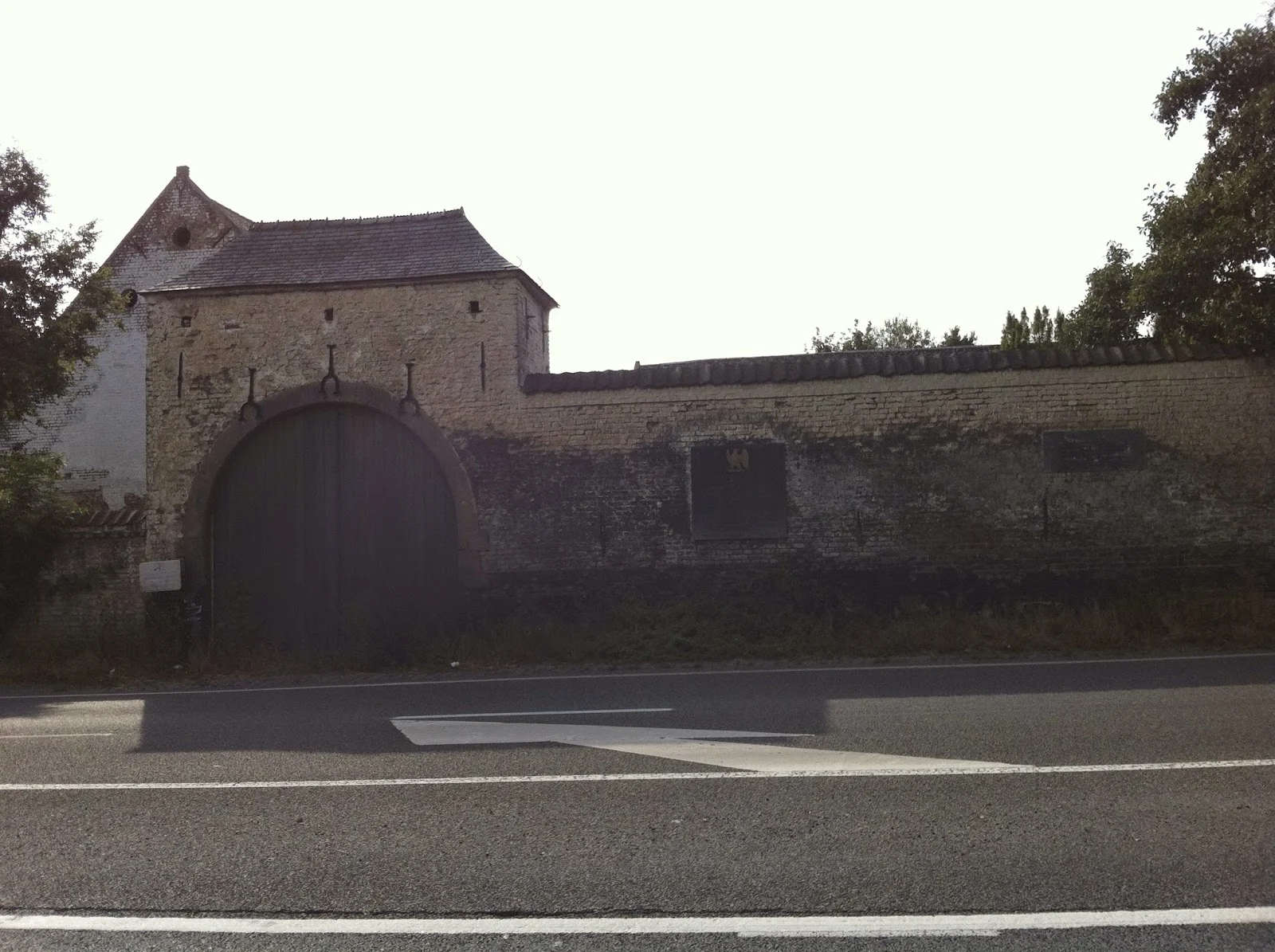During a visit to the Les Secrets de Moulinsart exhibit at the Château de Cheverny in France, I picked up a brochure for the Hergé Museum in Louvain-le-Neuve outside Brussels, Belgium.
Ever since I
studied French-language literature for children and francophone children’s
culture to become a French teacher in the 1990s, I have wanted to understand
Hergé, the creator of the Tintin comic
books better. The Hergé Museum was one
of the first stops we made on a weekend vacation during the summer of 2012.
The museum
is rich in panels of cartoon page drafts that allow you to understand the
multiple sketches that went into the creation of a single page when Hergé was a
cartoonist. As you work your way through
the French-language exhibits, you learn about the newspapers that Hergé worked
for; Le Vingtième Siècle and Le Soir.
Both newspapers were Catholic and sought to have a leisure section for
young people that Hergé filled with Tintin
or other comic strips. Most of
Hergé’s comic books started as comic strips in these newspapers.
Hergé was
not a wealthy illustrator at the beginning of his career. The second gallery following the tour is
decorated with his work for the advertising industry. Both his advertising and comic strip work
make use of techniques such as speed lines to indicate motion, the interplay of
angles to focus the eye, and color to incite emotion among other techniques to
focus viewer attention on use of products or product placements in attractive
surroundings.
My favorite
gallery was devoted to the influence of cinema on Hergé’s work. Books for each decade of his work were set
out on tables in this gallery. It was
interesting to see how Hergé could speed up a sequence by showing one long
frame on line, then two frames on the next line, and finally three frames on
the last line. The same sequence of
frames in reverse could slow up a sequence as well.
I am more
interested in technique than content with most comic books. However, Hergé’s publicity claim that Tintin comic books were for people aged
“seven to seventy-seven” keeps me coming back to the medium.
A book in
the gift shop convinced me to buy it for its focus on narrative in comic
books. The book is entitled J’apprends à raconter une histoire:
l’atelier de la bande dessinée avec Hergé (2001, editions Moulinsart). The books shows children how to ask
themselves questions to start a story, how to track story notes and sketches,
how to convey different moods with bubbles, and how to tell a story with
figures in action among many tips.
Children
often learn how to draw comic strip characters, buildings, and vehicles, but
sometimes need help with creating stories.
I was happy with this purchase that appealed to my love for knowing how
things work.
It took half
an hour to get back to Brussels where we ate dinner: a carbonnade flamande (beef stew) with fries
for me and entrecôte (steak) with fries for Laurent. Of course, the fries were dunked in
mayonnaise like the Belgians eat them.
By Ruth Paget, Author of Eating Soup with Chopsticks and Marrying France
Click here for: Ruth Paget's Amazon Books
Click here for: Ruth Paget's Amazon Books


































